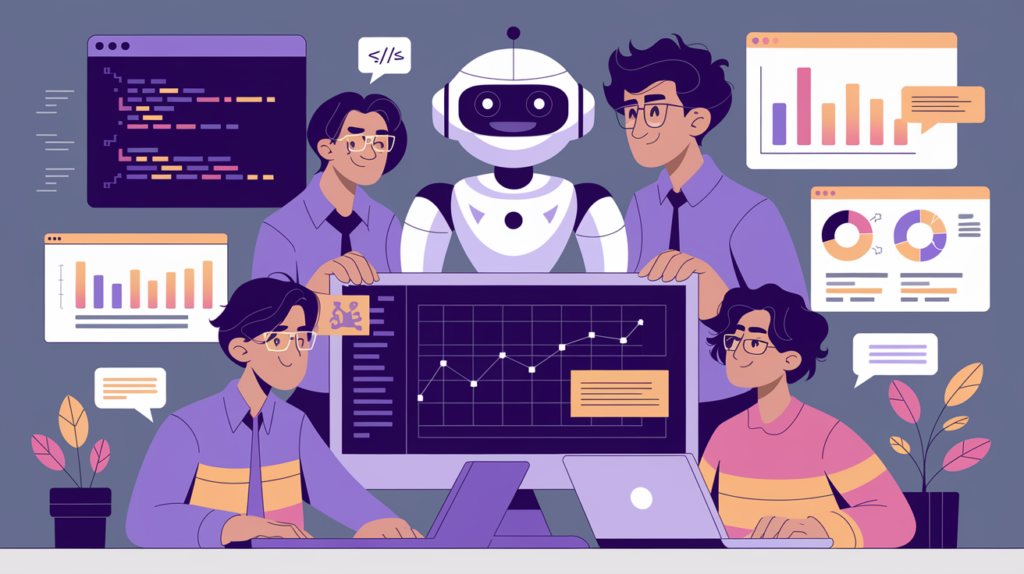AI in Education: Enhancing Personalized Learning
AI has quickly turned into a game-changer in all sorts of industries, and education’s not missing out either. The cool part of this shift is personalized learning—basically a way to customize learning experiences to fit what each student needs, their skills, and what they’re into. Mixing AI with personalized learning is set to totally change up classrooms, boost personal growth, and make education way more inclusive than it’s ever been.
This article delves into how AI is enhancing personalized learning, exploring the tools, benefits, challenges, and even possible future aspects of this groundbreaking approach.
What is Personalized Learning?
Personalized learning is a type of learning approach in which the teaching methods, content, and pace are designed according to the individual needs of learners. In contrast to one-size-fits-all approaches, personalized learning encourages more engagement because it accommodates students. In this context, AI involves processing significant amounts of data from which the strength, weakness, and preference in learning can be derived and imparted into an experience.
AI Tools in Education
AI tools give teachers and students many more new options for development. Some include:
- Adaptive Learning Systems: DreamBox and Smart Sparrow are examples of adaptive learning systems-the difficulty can adapt to the student’s performance.
- AI chatbots and Tutors: Immediate answers for questions and explanations for students using tools such as ChatGPT, Squirrel AI.
- Automated Grading Systems: Would help alleviate the burden on instructors in terms of grading essays, quizzes, and assignments.
- Virtual Reality (VR) and Augmented Reality (AR): These are engaging learning environments, with AI powering and presenting the scene mixed with VR and AR.
They produce more energetic and efficient classrooms, where learning is not directional but rather adjusted toward the student, not the other way around.

Advantages of AI in Personalized Learning.
Integrating AI into education offers several key advantages:
- Customized Learning Paths: AI adjusts the stuff to fit a student’s skills and how fast they learn, making the entire experience way better.
- Accessibility: AI tools can translate content into multiple languages, create captions, or even convert text to speech, enabling education for everyone.
- Better Engagement: Interactive AI systems make learning much more fun and not so scaring for students.
- Teacher Support: With the automation of grading tasks, AI clears the space for teachers to do what matters most-teach and mentor.
- Data-Driven Insights: AI gives educators actionable insights into student performance, which can help them make real-time adjustments.
AI in Curriculum Design
Curriculum design is another lesser-known revolution of AI. A digital AI could suggest, upon analyzing the data of students, the themes, resources, or even teaching methods that which the learners best resonate with. Thus, every lesson will become pertinent as well as effective in helping deepen their understanding or retain better.
AI and Special Education
In essence, AI transformed the game in special education with speech recognition software, text-to-speech converter and customized tutoring for students with different disabilities. For instance, quite helpful are the tools like Read&Write and Kurzweil 3000 for people with dyslexia and other learning disabilities because it allows every child to get a fair chance at learning.
Hurdles to AI Usage.
Even the promising aspect of employing AI in education is full of problems.
- Data Privacy Concerns: Sensitive student information remains safely secured.
- High Costs: The tools and infrastructures are highly expensive to schools in the budget.
- Ethical Issues: The algorithm bias and un-inclusiveness are always on the hot seat.
All of these concerns must be addressed to unlock the full benefit potential of AI in personalized learning.

Future of AI in Education:
After bringing predictive analytics and emotional AI-it is an AI that detects the emotion of a student,-it promises to bring some bright future in education. They may make education more responsive and effective.
FAQs
What is AI doing in personalized learning?
- AI analyzes data from the students’ to create unique learning experiences that identify and match needs and interests.
Can artificial intelligence replace teachers in classrooms?
- No. AI is meant to complement the teacher’s role, not replace him. The personal touch in teaching cannot be replaced.
What applications does AI have in education?
- Such as adaptive learning systems, virtual learning consultants, and automated grading with the likes of Grammarly and Canvas.
Can one get AI education?
- Availability benefits notwithstanding, their costs are substantial and prohibitively expensive for widespread adoption. Work is underway to make them less expensive.
How does AI confront student weaknesses?
- AI picks up where students are struggling and provides them with specific resources or practice to get better.
Are risks of using AI in education?
- Yes, along with privacy concerns, biases in algorithms, and reliance on technology, regulation and proper training can really mitigate those risks.
Conclusion
This is not a fad: AI in education is rather a gigantic change towards highly personalized and engaging learning that is effective. The focus on the needs of every learner will help AI do well for its students and help teachers make quality education easier to provide. With some hurdles, the potential of AI in personalized learning is way too big to overlook.







